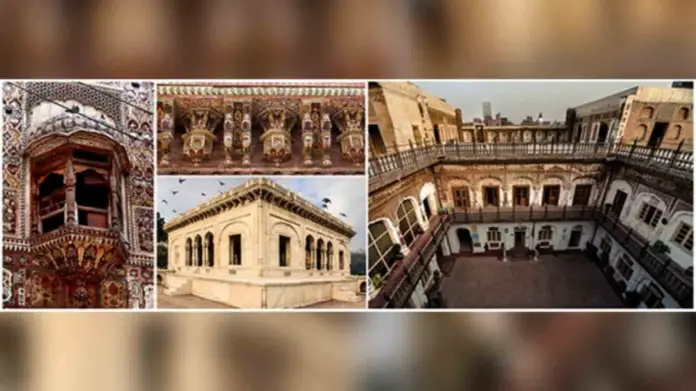Heritage is a nation’s legacy, and nations that do not respect their heritage and culture cannot stand with dignity. Our cultural and natural heritages are both irreplaceable sources of life and inspiration. However, a sad truth is that while the entire world’s heritage sites are negatively being affected by climate change, Pakistan’s heritage sights are suffering due to mere negligence. Also, it may not be surprising if people have not even heard the names of a few of these timeless establishments.
Rohtas Fort:
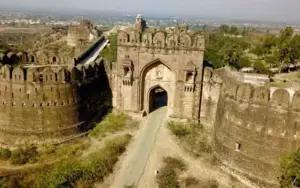
Recognized as a World Heritage Site by UNESCO, this fort was built by General Sher Shah Suri between 1541 and 1548 in Jhelum and is a magnificent blend of Turkish and Mughal architecture that enchants the onlookers with its grandeur and splendor. However, due to the negligence of authorities, it’s been unkempt.
Jain Temples of Nagarparkar:
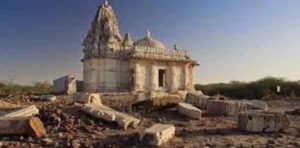
This site is actually a small town situated at the foot of the dramatic and mineral-rich Karunjhar hills, and neighbors the Indian border in Tharparkar, Sindh. There are over twelve Jain temples to be found in the region which date back to as far as the 14th Century, and are now included among the oldest heritage sites of Pakistan. Although it’s a precious location for tourism, however, the reason for a negligent attitude towards it is unknown. It continues to remain an unattended site with no promotion.
Sheikhupura Fort:
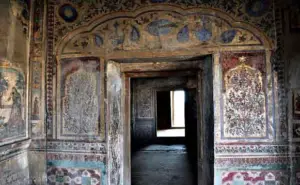
The Sheikhupura Fort was built in 1607 during the reign of the Mughal Emperor, Jahangir. This once glorious fort is a symbol of the glory of the Mughal era. Sadly, the grand monument is now littered with graffiti and left vandalized by the ignorant trespassers.
The shrine of Hazrat Shah Burhan, Chiniot:

Shah Burhanuddin Bukhari was a celebrated Muslim saint. After his death in 1669, Mughal Emperor Shah Jehan commissioned a grand complex spreading over several acres, comprising of the saint’s tomb, a well, a pond and a mosque to honour the saint. The walls and the grand dome are adorned with intricate and colorful fresco work, a hallmark of Mughal architecture. The well and the pond were meant for supplying clean water to the visitors. However, with time, the rot set in and people started encroaching upon the shrine’s land. Although the Auqaf department is the keeper of it but the result is quite opposite.
Walled City of Lahore:
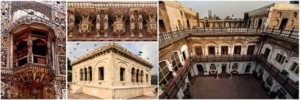
The Walled City of Lahore, also known as Old City, forms the historic core of Lahore. The city was established around 1000 CE in the western half of the Walled City, which was fortified by a mud wall during the medieval era. The Walled City was bestowed with numerous monuments during the Mughal era, with some of Lahore’s most iconic structures being located in the Walled City, such as the lavishly decorated Wazir Khan Mosque, the massive Badshahi Mosque, and the Shahi Hammam. Despite being the most colorful city of Pakistan, its splendour was never preserved. The once royal alleys are now filled with dirt and filth.
Hindu temple in Hassanabdal:
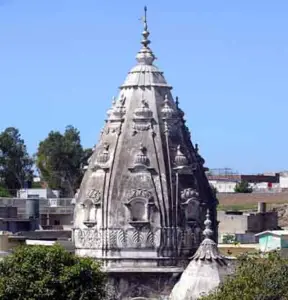
Hasanabdal is a city famous for harbouring worship sites of Sikhs. Panja Sahib is one of the historical places, where Muslims, Hindus, and Sikhs have co-existed since centuries. The mosques are safe and filled with people five times a day. Gurdwara Panja Sahib, being a source of revenue, is maintained by the government. The four Hindu temples, on the other hand, are in the private custody of people. These abandoned temples situated in different parts of the city are being used as toilets by the claimants. This month I went to see one of the temples, which is now inhabited by some people. They have used the main building as store and kitchen, which were clean but crumbling, raising serious questions upon the government’s heritage preservation policies.
Bahram ki Baradari, Attock Khurd:
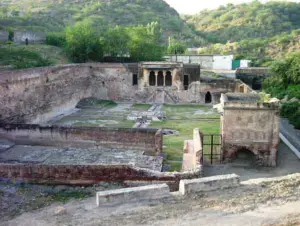
Built by Bahram Khan during his chieftaincy in 1681 or a little after, this building is situated at the ridge of mountains on the southern side of G.T. Road near Attock Khurd. It was probably a 5-star accommodation of yesteryears. But today, it is more of a haunted house. I know this place very well because I used to play in the gardens when I would visit my aunt there. It was back then that I used to pray for the government to preserve these precious, unmatchable treasures, but to my dismay, nothing has happened yet. Some greedy people have also gone to the extent of vandalizing the site by building their homes in the backyards.
Nandana Fort and Vishnu Temple:
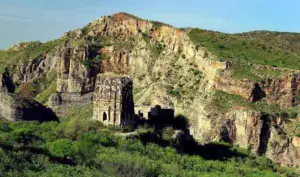
The 1500-year-old Nandana Fort and Vishnu temple stand at Baghanwala, Pind Dadan Khan. The word Nandana means ‘Lord Vishnu’s garden’ in Sanskrit. Nandana Fort and Temple always had a beautiful fruit garden at the foothill. The once mighty outpost is also in ruins now, and so is the fruit garden. Although there are rumours of its restoration, but no confirmation.
Architectural heritage in ruins of Hazro:

Another ruin lies in Hazro. Formerly a fortified town with four gates, Hazro is home to many temples, gurdwaras and havelis believed to have been built during the Sikh and British era.
It is rather sad to look around Hazro and witness its architectural heritage in ruins. The concerned authorities must take serious steps and designate some of the most important streets as a heritage site.
Moreover, the people of this nation must give a helping hand in preserving these precious treasures and become tolerant to other religions and beliefs.




